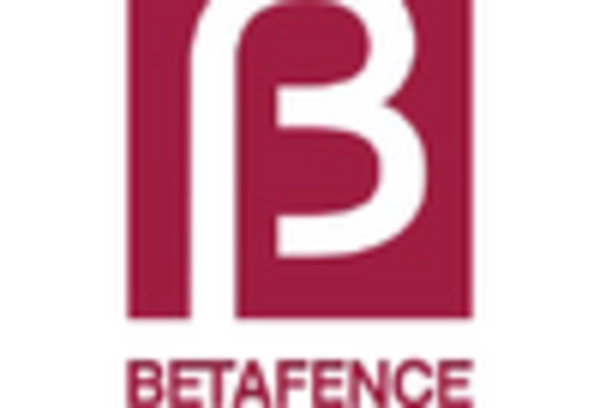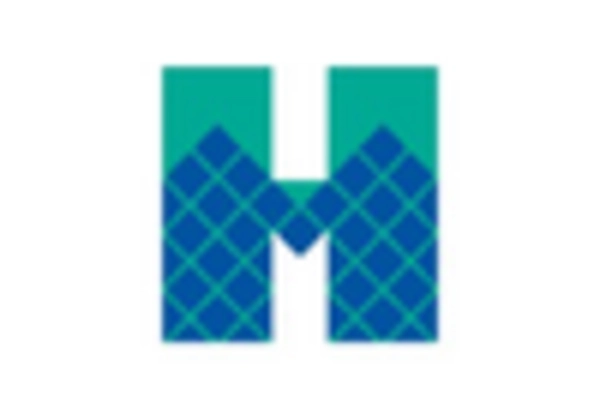Rising Security Concerns
The increasing concerns regarding safety and security in urban and rural areas are driving the demand for fencing market solutions in China. With crime rates fluctuating, property owners are investing in robust fencing systems to protect their assets. The fencing market is projected to grow as individuals and businesses seek to enhance their security measures. In 2025, the market is expected to witness a growth rate of approximately 8% as more consumers prioritize safety. This trend is particularly evident in residential areas, where homeowners are opting for higher fences and advanced locking mechanisms. Additionally, commercial properties are also investing in fencing solutions to deter theft and vandalism, further propelling the fencing market in China.
Growth of the Construction Sector
The robust growth of the construction sector in China is a significant driver for the fencing market. As new residential, commercial, and industrial projects emerge, the need for fencing solutions becomes increasingly apparent. In 2025, the construction industry is projected to expand by approximately 10%, leading to a corresponding rise in demand for fencing products. This growth is fueled by urbanization and the development of infrastructure, which necessitates the installation of fencing for safety and delineation purposes. Additionally, construction companies are seeking durable and cost-effective fencing options to meet project requirements, thereby enhancing the fencing market's potential. The synergy between construction activities and fencing solutions is likely to bolster market dynamics in the coming years.
Government Regulations and Policies
Government regulations and policies aimed at enhancing public safety and urban planning are influencing the fencing market in China. Local authorities are increasingly mandating the installation of fencing in specific zones, particularly in industrial and commercial areas. These regulations are designed to ensure safety and security, thereby creating a steady demand for fencing solutions. In 2025, it is estimated that compliance with these regulations will contribute to a market growth of around 6%. Furthermore, initiatives promoting the development of public spaces and parks often include fencing as a necessary component, which further supports the fencing market. The alignment of fencing solutions with government policies is likely to create opportunities for manufacturers and suppliers in the industry.
Increased Awareness of Aesthetic Appeal
The growing awareness of aesthetic appeal among property owners is influencing the fencing market in China. Consumers are increasingly recognizing that fencing serves not only a functional purpose but also enhances the visual appeal of their properties. This trend is leading to a demand for decorative and customized fencing solutions that align with personal tastes and architectural styles. In 2025, it is anticipated that the market for decorative fencing will grow by around 7%, as homeowners and businesses seek to create inviting environments. The emphasis on aesthetics is prompting manufacturers to innovate and offer a variety of designs, materials, and finishes. This shift towards aesthetically pleasing fencing options is likely to reshape the fencing market landscape in China.
Technological Innovations in Manufacturing
Technological innovations in manufacturing processes are transforming the fencing market in China. Advances in materials science and production techniques are enabling the creation of more durable, lightweight, and cost-effective fencing solutions. In 2025, it is expected that the adoption of new technologies will enhance production efficiency by approximately 15%, allowing manufacturers to meet the growing demand more effectively. Innovations such as automated manufacturing and smart fencing solutions are also emerging, appealing to tech-savvy consumers. These advancements not only improve product quality but also reduce costs, making fencing solutions more accessible to a broader audience. The integration of technology into the fencing market is likely to drive competitive advantages for manufacturers and reshape consumer preferences.

















Leave a Comment